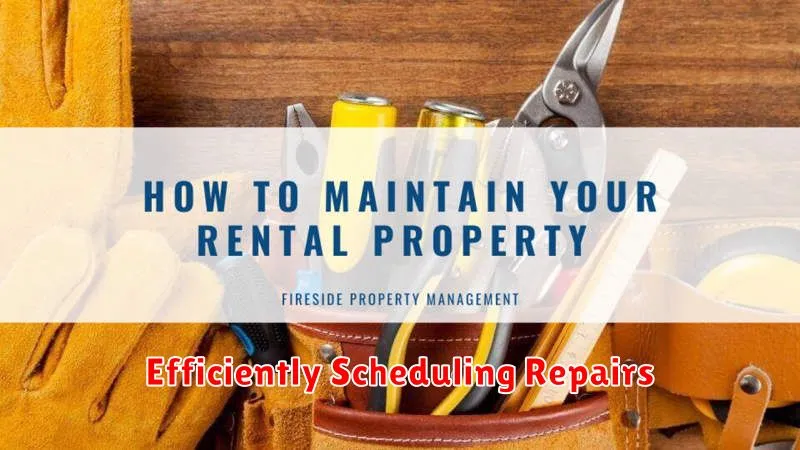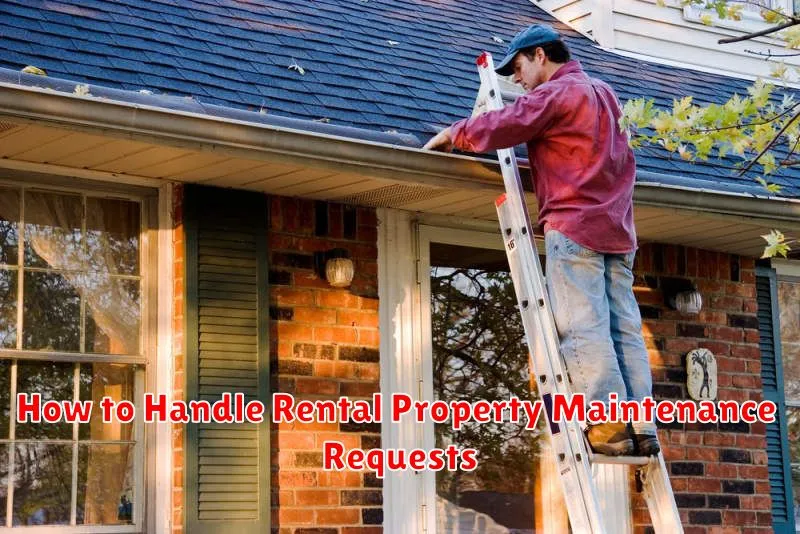Handling rental property maintenance requests efficiently is crucial for both landlords and tenants. Effectively managing maintenance requests ensures tenant satisfaction, preserves the value of your property, and minimizes potential legal issues. This guide provides comprehensive information on how to establish a streamlined system for handling rental property maintenance, from the initial request to the final resolution. Understanding the nuances of property maintenance, including preventative measures and emergency protocols, can contribute significantly to a positive landlord-tenant relationship and a successful rental business. Learn how to navigate maintenance requests effectively, reduce costs, and ensure your rental property remains a desirable place to live.
Whether you’re a seasoned landlord or just beginning your journey in rental property management, understanding the proper procedures for handling maintenance requests is essential. This article will cover various aspects of property maintenance, from establishing clear communication channels with tenants to implementing a reliable system for tracking and resolving issues. We’ll explore best practices for rental property maintenance requests, including legal considerations, cost-effective solutions, and strategies for preventative maintenance. By proactively addressing maintenance needs, you can protect your investment, foster positive tenant relationships, and ensure the long-term success of your rental property business.
Establishing Clear Communication Channels
Effective communication is crucial for handling maintenance requests efficiently. Clearly defined channels ensure timely responses and prevent misunderstandings. This benefits both landlords and tenants.
Outline preferred communication methods upfront in the lease agreement. Specify whether tenants should submit requests via email, a dedicated online portal, phone call, or text message. Provide clear instructions for each method, including contact information and required details.
Establishing consistent response times manages tenant expectations. Communicate how quickly tenants can expect acknowledgment of their request, even if a solution isn’t immediate. Regular updates throughout the repair process are essential for maintaining a positive landlord-tenant relationship.
Prioritizing Maintenance Requests
Effectively managing maintenance requests requires a clear prioritization system. This ensures urgent issues are addressed promptly, preventing further damage and tenant dissatisfaction. Non-emergency requests can then be scheduled appropriately.
Categorize requests based on urgency:
- Emergency: Situations requiring immediate attention, such as no heat, burst pipes, or fire hazards.
- Urgent: Issues needing prompt repair, like a broken appliance, leaky faucet, or malfunctioning toilet.
- Routine: Non-critical repairs, including minor drywall damage, sticking doors, or dripping faucets.
Address emergencies immediately. Urgent requests should be scheduled within 24-48 hours. Routine maintenance can be addressed within a reasonable timeframe, typically a week or two.
Efficiently Scheduling Repairs

Prompt and efficient scheduling is crucial for tenant satisfaction and preserving your property. Prioritize urgent repairs that affect habitability, such as plumbing or heating issues.
Communicate clearly with tenants about scheduled appointments. Provide a reasonable timeframe for the repair and confirm with the tenant. If a delay is unavoidable, notify them immediately and provide an updated schedule.
Coordinate with contractors efficiently to minimize disruption. Consolidate smaller repairs if possible to reduce the number of visits. Maintain clear communication with contractors throughout the process, confirming arrival times and any necessary preparations.
Maintaining Records of Work Done
Meticulous record-keeping is crucial for managing rental property maintenance. Detailed records protect both landlords and tenants, offering a clear history of completed repairs and expenses.
For each maintenance request, document the following: the date the request was received, the nature of the problem, the date the work was completed, the name of the contractor or handyman (if applicable), a description of the work performed, and the total cost.
Retain receipts for all parts and materials used. This documentation is invaluable for tax purposes and can also serve as evidence in case of disputes.
Consider using a spreadsheet or property management software to organize your maintenance records. This allows for easy searching and reporting, simplifying tasks like tracking expenses and identifying recurring issues.
Ensuring Tenant Satisfaction
Tenant satisfaction is paramount to successful property management. A satisfied tenant is more likely to renew their lease, reducing vacancy rates and turnover costs. Proactive communication and efficient handling of maintenance requests are key to achieving this.
Acknowledge requests promptly and provide realistic timelines for completion. Keep tenants updated on the progress of repairs. Following up after completion demonstrates care and provides an opportunity to address any remaining concerns.
Respect tenants’ privacy by providing adequate notice before entering their unit for non-emergency repairs. Treat tenants with courtesy and professionalism throughout the entire maintenance process.
Handling Emergency Situations
Emergency maintenance requests demand immediate attention. These situations can threaten the safety and well-being of tenants and can cause significant property damage if left unaddressed. Examples include fire, flooding, gas leaks, and loss of heat during freezing weather.
Prioritize tenant safety and follow established protocols. You should have a 24/7 emergency contact number readily available for tenants. Upon receiving an emergency request, assess the situation quickly. If the situation involves immediate danger, advise the tenant to contact emergency services (911) first, then you.
Engage qualified professionals promptly to address the emergency. Document all communication and actions taken regarding the emergency, including expenses incurred. After the situation is resolved, follow up with the tenant to ensure their well-being and address any remaining concerns.

